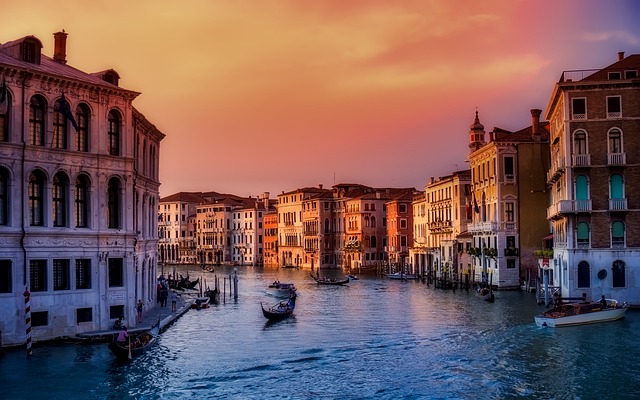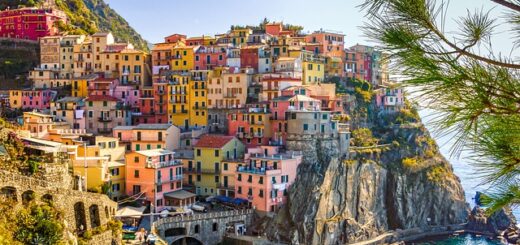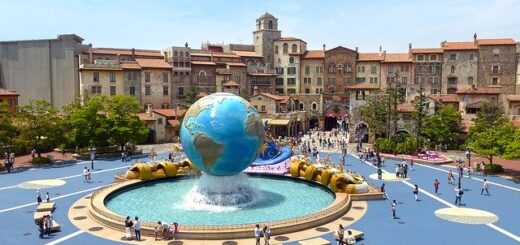The Best Guide to Museum Hopping In Venice
They say a picture is worth a thousand words. Museums are full of pictures. And statues. And relics from ancient civilizations. Museums teach us about the past so that we can better understand the present. Museums can also help us learn about cultures that are different from our own. These reasons are exactly why Museum Hopping has become increasingly popular around the world.
Venice, Italy is one of the best cities to go Museum Hopping. Venice is the sort of place that just oozes history; there are History Museums, Science Centers, and Art Galleries almost everywhere you look. There are also a ton of rare and exclusive exhibits hidden in plain sight.
Exploring the “City of Canals” is so much fun, if you know where to go. That’s why we’re going to show you how to go Museum Hopping in Venice. We’ll go near and far, high and low to find the best museums in the city. Better slip on your walking shoes and use a luggage storage service for your extra baggage.

Museo di Palazzo Grimani
The Museo di Palazzo Grimani is a masterwork of Renaissance Architecture. This palace turned museum is absolutely brimming with breathtaking frescos, statues, murals, and reliefs. Palazzo Grimani is divided into several different chambers, including a “Neoclassical Room” and a “Tribuna”. This state-owned museum is easily one of the most popular venues in Venice.
Fondazione Querini Stampalia
Conte Giovanni is a revered figure in Venice. Not only was he the last member of the prestigious Querini Stampalia clan, but he was also the ambassador of Venice to Paris. Fondazione Querini Stampalia is his gift to the citizens of Venice. It features an extensive collection of artwork as well as an archive and a library. The late architect Carlo Scarpa was commissioned to design this famous museum. Guests who’d like to visit should go online to snag their tickets.
St. Mark’s Museum
There’s just something truly awe-inspiring about basilicas. These massive churches are places of worship, but they’re also some of the most beautiful buildings around. Saint Mark’s Basilica is a prime example of what we’re talking about. This Gothic-style building is simply breathtaking. The basilica also houses St. Mark’s Museum, an exhibit full of wonderful religious paintings and gorgeous Gothic architecture.
National Archaeological Museum Venice
It all started in 1523. Cardinal Domenico Grimani gave a collection of Greek sculptures to the people of Venice when he passed away. Giovanni Grimani, Domenico’s nephew and a name that we’ve discussed earlier, expanded this collection over the years. The end result is the National Archaeological Museum of Venice. This museum houses Greek statues as well as Assyrian, Babylonian, and Egyptian artifacts. Visiting this venue is like traveling back in time.
Museo Correr
Teodoro Correr was a true patron of the arts. During his lifetime, he collected works of art from all over Italy. Teodoro Correr later opened his collection to the public and Museo Correr was born. This locale has Neoclassical Rooms, Imperial Apartments, the “Pinacoteca”, and more. Stop by their website to learn more.
Fortuny Museum
Fashion, food, and the arts are extremely big in Venice. Mariano Fortuny is linked to that first part; he was an incredibly prolific fashion designer of Spanish descent who lived from 1871 to 1949. Mariano was the son of Maria Fortuny, a revered Spanish painter. Like father like son, Mariano developed a strong passion for paint and canvas. The Fortuny Museum houses clothes, paintings, and lamps designed by Mariano himself. Essentially, this exhibit used to be Mariano’s private studio. Now, guests from all around the world can visit the Fortuny Museum.
Carlo Goldoni’s House
The awesome thing about a lot of artists is that they never just stick to one discipline. A famous painter might really love pottery. A renowned seamstress might really be into interpretive dance. Carlo Goldoni is a prime example of what we’re talking about; he was an esteemed playwright who also happened to be a patron of the arts. Goldoni spent years collecting paintings, costumes, and furniture that genuinely inspired him. In 1931, that collection was opened to the public. You can learn more about Goldoni and his palace by visiting this website.
Basilica S.Maria Gloriosa dei Frari
When you visit the Basilica of Frari’s website, you’re instantly greeted with this message: “Eight centuries of art, history, and faith”. True to that motto, the Basilica Frari has been around since 1338 at least. Cherished works of art like Madonna with Child and Saints by Giovanni Bellini are on display here. Simply put, you can’t go museum hopping in Venice without stopping by this revered art center.
Scuola Grande di San Rocco
Saint Roch, or San Rocco, holds a special place in the hearts of many Italians. This holy man lived between 1348 and 1379. Saint Roch helped many people during the Black Plague and eventually became a saint of pilgrims. Scuola Grande di San Rocco wouldn’t exist without him. This building doubles as the home of Saint Roch’s confraternity as well as a collection for the works of Tintoretto. There’s so much more to this building than meets the eye. We highly encourage you to read up on Saint Roch and Tintoretto via this link.
Museo Leonardo da Vinci
Leonardo da Vinci is possibly the most famous Italian artist in history. But da Vinci was so much more than just an artist; he was an engineer, a scientist, a philosopher — da Vinci was the epitome of a Renaissance Man. This museum is dedicated to the painter of the Mona Lisa, the creator of the Vitruvian Man, and the inventor of the Aerial Screw. This museum is dedicated to Leonardo da Vinci.
Check out our other travel guides to get more such useful information.



















